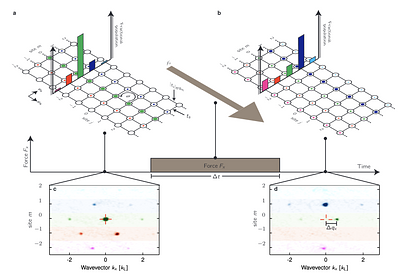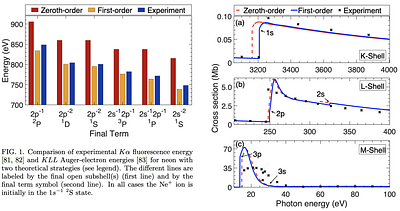By: Dina Genkina, Lauren M. Aycock, Hsin-I Lu, Alina M. Pineiro, Mingwu Lu, I. B. Spielman
Physical systems with non-trivial topological order find direct applications
in metrology[1] and promise future applications in quantum computing[2,3]. The
quantum Hall effect derives from transverse conductance, quantized to
unprecedented precision in accordance with the system's topology[4]. At
magnetic fields beyond the reach of current condensed matter experiment, around
10^4 Tesla, this conductance remains precisely quantized but takes... more
Physical systems with non-trivial topological order find direct applications
in metrology[1] and promise future applications in quantum computing[2,3]. The
quantum Hall effect derives from transverse conductance, quantized to
unprecedented precision in accordance with the system's topology[4]. At
magnetic fields beyond the reach of current condensed matter experiment, around
10^4 Tesla, this conductance remains precisely quantized but takes on different
values[5]. Hitherto, quantized conductance has only been measured in extended
2-D systems. Here, we engineered and experimentally studied narrow 2-D ribbons,
just 3 or 5 sites wide along one direction, using ultracold neutral atoms where
such large magnetic fields can be engineered[6-11]. We microscopically imaged
the transverse spatial motion underlying the quantized Hall effect. Our
measurements identify the topological Chern numbers with typical uncertainty of
5%, and show that although band topology is only properly defined in infinite
systems, its signatures are striking even in nearly vanishingly thin systems.
less
By: Laura Budewig, Sang-Kil Son, Robin Santra
We theoretically study orbital alignment in x-ray-ionized atoms and ions,
based on improved electronic-structure calculations starting from the
Hartree-Fock-Slater model. We employ first-order many-body perturbation theory
to improve the Hartree-Fock-Slater calculations and show that the use of
first-order-corrected energies yields significantly better transition energies
than originally obtained. The improved electronic-structure calculati... more
We theoretically study orbital alignment in x-ray-ionized atoms and ions,
based on improved electronic-structure calculations starting from the
Hartree-Fock-Slater model. We employ first-order many-body perturbation theory
to improve the Hartree-Fock-Slater calculations and show that the use of
first-order-corrected energies yields significantly better transition energies
than originally obtained. The improved electronic-structure calculations enable
us also to compute individual state-to-state cross sections and transition
rates and, thus, to investigate orbital alignment induced by linearly polarized
x rays. To explore the orbital alignment of transiently formed ions after
photoionization, we discuss alignment parameters and ratios of individual
state-resolved photoionization cross sections for initially neutral argon and
two exotic electronic configurations that may be formed during x-ray
multiphoton ionization dynamics induced by x-ray free-electron lasers. We also
present how the orbital alignment is affected by Auger-Meitner decay and
demonstrate how it evolves during a sequence of one photoionization and one
Auger-Meitner decay. Our present work establishes a step toward investigation
of orbital alignment in atomic ionization driven by high-intensity x rays.
less

